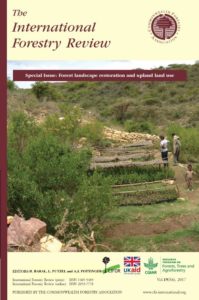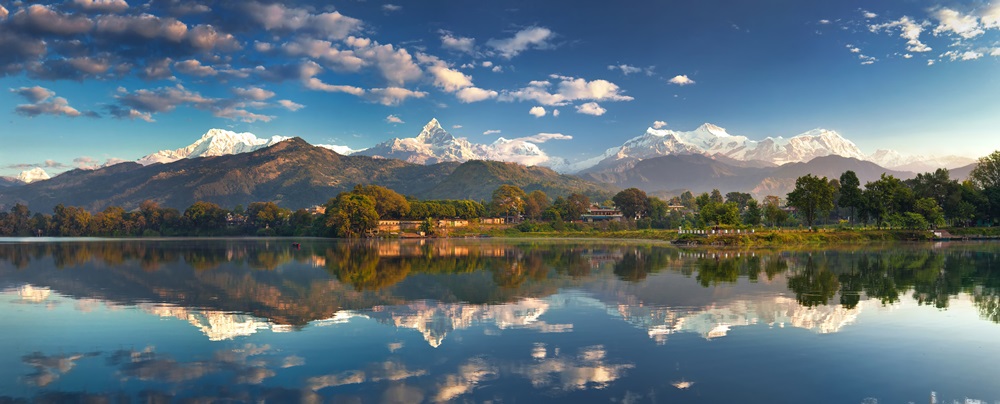Nepal began a community-based forest landscape restoration (CBFLR) experiment in the 1970s and is now seeing benefits ranging from forest recovery to half a million tourists annually.
On a clear day, reflections of snow-capped peaks shine like a vivid oil painting on the surface of Phewa Lake. Trees and shrubs blanket the ridges tumbling down to the water, and beyond, villages dot the landscape among the fields of tea and coffee. Some 500,000 tourists visit this area in Nepal just south of Pokhara annually, using it as a base to conquer the nearby 2,508-meter peak of Panchase, as a gateway to the Annapurna Circuit, or simply as a place of quiet contemplation.
As idyllic as the Phewa Lake region is now, it wasn’t always this way. Some 40 years ago, the emerald hillsides—steep, with average slopes of 40 percent—were barren and eroded, and the midnight-blue waters of the lake were laden with sediment. Nearby fields and villages were prone to flash floods and mudslides.
But an exemplary experiment in community-based forest landscape restoration (CBFLR), kicked off by the Nepalese government in the late ’70s, helped reverse the damage, allowing the area to re-blossom into the bucket-list dream and clean watershed for local communities that it is today.
 A recent paper documents this extraordinary recovery, providing analysis of land cover change in the surrounding area over a 40-year period. Using satellite imagery from 1975, 1995 and 2015, in conjunction with discussions with local communities and experts on their perceptions of impacts and benefits, the research provides a clearer picture of how the landscape and land-use trends changed over time.
A recent paper documents this extraordinary recovery, providing analysis of land cover change in the surrounding area over a 40-year period. Using satellite imagery from 1975, 1995 and 2015, in conjunction with discussions with local communities and experts on their perceptions of impacts and benefits, the research provides a clearer picture of how the landscape and land-use trends changed over time.
“In the 1970s, the watershed was severely degraded,” says lead author Kiran Paudyal. “So the government of Nepal started conservation of the watershed and later moved to bring people’s participation into the efforts. We wanted to look at the impact of CBFLR on land use, land cover, as well as the ecosystem services impacts on the local and global community through things like carbon sequestration and biodiversity.”
The study, titled “Change in land use and ecosystem services delivery from community-based forest landscape restoration in the Phewa Lake watershed, Nepal” found not only that the forest recovery was tremendous, but also that it was due largely to the local community involving themselves directly in the efforts and being properly compensated for doing so.
This integration of economy and ecology, Paudyal believes, is key to successful restoration of forests not just here, but anywhere.
The Center for International Forestry Research (CIFOR) envisions a more equitable world where forestry and landscapes enhance the environment and well-being for all. CIFOR is a non-profit, scientific institution that conducts research on the most pressing challenges of forest and landscape management around the world. Using a global, multidisciplinary approach, they aim to improve human well-being, protect the environment, and increase equity. To do so, they conduct innovative research, develop partners’ capacity, and actively engage in dialogue with all stakeholders to inform policies and practices that affect forests and people.
CIFOR’s work is based on three pillars, all of which are essential for achieving our mission:
- Research for impact;
- Capacity development;
- Outreach and engagement.
CIFOR works with many local and international partners. CIFOR is a CGIAR Research Center, and leads the CGIAR Research Program on Forests, Trees and Agroforestry (FTA).
Photo of Phewa Lake, Nepal via Adobe Stock.

